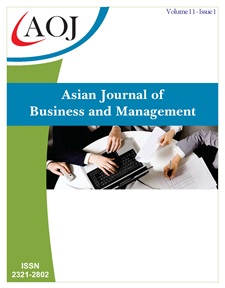Dining Preferences of Mall-Goers in Bohol
DOI:
https://doi.org/10.24203/t55srp28Keywords:
Dining Preferences, Food Variation and Taste, Service Personnel, Price, Ambience, BoholAbstract
The study is to assess the level of preference in dining establishments of mall-goers in Bohol. Specifically, the study sought to answer the respondent’s profile in terms of the age, gender, nationality and income. Moreover, the perceived level of preference of mall-goers and problems encountered during their dining experience, the significant relationship and difference between their profiles and level of preference were assessed. In the views thereof, the study would propose a program to retain customer satisfaction and loyalty in the service offered by establishment.
This study utilized descriptive-correlational method of research using a survey questionnaire to determine the level of preference of customer in dining establishments. The sample size was 50 mall-goers using purposive sampling. The locale of the survey was in Tagbilaran City as a hub of commerce and lone city of the province of Bohol where we can find the Island City Mall. The survey used a researcher made survey questionnaire which was composed of three parts: profile, level of preference of mall-goers in terms of food variation and taste, service personnel, price and ambience based on the Likert rating scale. Treatment of data were done using frequency count and per cent distribution; weighted mean and ranking; regression; and one-way ANOVA.
Results showed that most of the respondents were young adults with ages below 20 years old, mostly were females and Asian with below P10, 000.00 income. Furthermore, it showed that customers have problems with the staffs because of their slow and not good service. This amplified the hypothesis that there is a significant relationship between the respondent’s profiles in terms of age, gender, and nationality with their level of preference, and there is a significant difference between the respondent’s profile in terms of income and their level of preference. It was concluded that respondents highly preferred all of the attributes in a dining establishment in terms of food variation and taste, service personnel, price, and ambience. Finally, with the findings of the study, it was recommended that management should conduct seminars and trainings for job enrichment, motivational patterns and goal consciousness for food and drink provision.
References
Rai, B. & Rawal, R. (2019). Consumers' preference of fast food items in Kathmandu Valley. NCC Journal, 4 (1), 17-25.Bandura, A. (1982). Self-efficacy mechanism in human agency. Retrieve from psycnet.apa.org.
Karki, D. & Panthi, A. (2018). How food quality, price, ambiance and service quality effects customer satisfaction: A study on Nepalese restaurants in Finland. Academia. Dotan, H. (2007). Friendship ties at work: Origins, evolution and consequences for managerial effectiveness.
Wadolowska, L., Babicz-Zielinska, E. & Czarnocinska, J. (2008). Food choice models and their relation with food preferences and eating frequency in the Polish population: POFPRES study. Food Policy, 33(2), 122-134.Gill, A., Flaschner, A. & Shachar, M. (2006). Mitigating stress and burnout by implementing transformational-leadership. International Journal of Contemporary Hospitality Management. 18 (6).
Vroom, V. (1964). Work and motivation. New York: Wiley and Sons.
Miravete, E. J. (2016). Price discrimination (theory), (2nd ed.). The New Palgrave Dictionary of Economics.Hamilton,
Othman, A., Shehata, A., Mahmoud, S. & Mohamed, A. (2016). The effect of restaurant atmosphere on customer satisfaction- as applied to ethnic restaurants. Research Gate.
Uddin, M. (2019). Customer loyalty in the fast food restaurants of Bangladesh. British Food Journal.
Downloads
Published
Issue
Section
License
Copyright (c) 2025 Asian Journal of Business and Management

This work is licensed under a Creative Commons Attribution-NoDerivatives 4.0 International License.
- Papers must be submitted on the understanding that they have not been published elsewhere (except in the form of an abstract or as part of a published lecture, review, or thesis) and are not currently under consideration by another journal published by any other publisher.
- It is also the authors responsibility to ensure that the articles emanating from a particular source are submitted with the necessary approval.
- The authors warrant that the paper is original and that he/she is the author of the paper, except for material that is clearly identified as to its original source, with permission notices from the copyright owners where required.
- The authors ensure that all the references carefully and they are accurate in the text as well as in the list of references (and vice versa).
- Authors retain copyright and grant the journal right of first publication with the work simultaneously licensed under a Creative Commons Attribution License that allows others to share the work with an acknowledgement of the work's authorship and initial publication in this journal.
- Authors are able to enter into separate, additional contractual arrangements for the non-exclusive distribution of the journal's published version of the work (e.g., post it to an institutional repository or publish it in a book), with an acknowledgement of its initial publication in this journal.
- Authors are permitted and encouraged to post their work online (e.g., in institutional repositories or on their website) prior to and during the submission process, as it can lead to productive exchanges, as well as earlier and greater citation of published work (See The Effect of Open Access).
- The journal/publisher is not responsible for subsequent uses of the work. It is the author's responsibility to bring an infringement action if so desired by the author.


